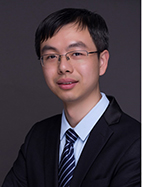报告人: 王林军 教授 
浙江大学化学系 Email: ljwang@zju.edu.cn
时间: 2019年9月6日(周五)10:00
地点: 知新楼C座 1113室
邀请人: 高琨 副教授
内容简介:
Due to the ease of implementation and good balance between efficiency and reliability, surface hopping has become one of the most widely used mixed quantum-classical methods for studying general charge and exciton dynamics. In extended systems (e.g., molecular aggregates, polymers, surfaces, interfaces, and solids), however, surface hopping suffers from several severe problems, and thus the relevant applications have been limited in the past years. Trivial crossings between uncoupled or weakly coupled states have highly peaked nonadiabatic couplings and thus are difficult to deal with in the preferred, adiabatic representation. Recently, we introduce crossing classification and self-consistent correction to surface hopping. We further show that a proper choice of subspace can significantly simplify the surface crossings. As a result, fast time step convergence and system size independence have been achieved in thousands of molecular sites. In addition, the decoherence and superexchange effects are also important in extended systems. We propose a branching corrected surface hopping, which resets the wavefunction coefficients based on the judgement of wave packet reflection. This approach ensures the self-consistency of using the traditional time-dependent Schrödinger equation to describe mixed quantum-classical dynamics and captures the majority of the real decoherence effect as demonstrated in over two hundred scattering models, surpassing other existed decoherence correction algorithms. We also propose global flux and Liouville space surface hopping, which provide indirect and high-order population transfer channels. With our method developments, complex nonadiabatic dynamics could be simulated with improved efficiency and reliability, thus promising for many applications in chemistry, physics, biology, and material sciences.
报告人介绍:
王林军,2004年本科毕业于中国科学技术大学零零班,2009年于中国科学院化学研究所获得博士学位(导师帅志刚教授),随后分别在比利时蒙斯大学、美国罗切斯特大学和南加州大学做博士后研究。2016年3月加入浙江大学化学系,博士生导师。至今共发表SCI论文59篇,总被引2700余次,h因子为28。主要研究领域为扩展体系的非绝热动力学,近几年发展了一系列轨线面跳跃方法,系统地提高了复杂体系混合量子-经典动力学模拟的效率、精度和普适性,有广泛的应用前景。其他研究包括电子/激子的动力学机制、半经典动力学、全局优化和机器学习,等。
欢迎各位老师同学参加!
